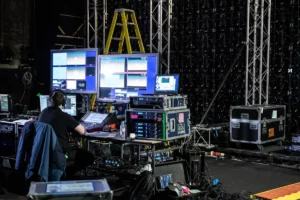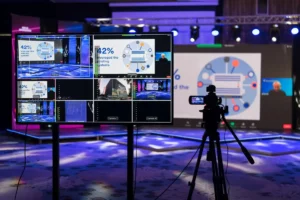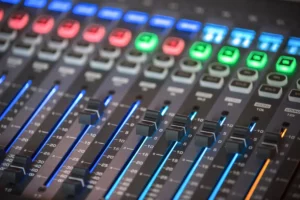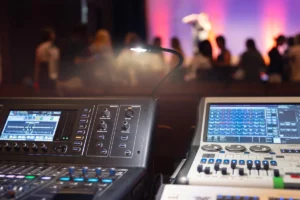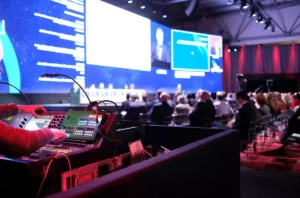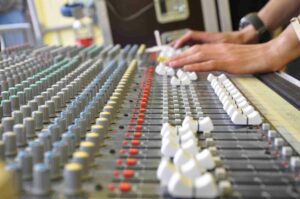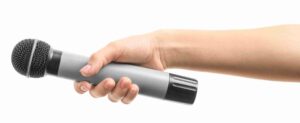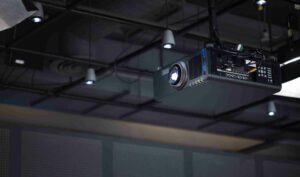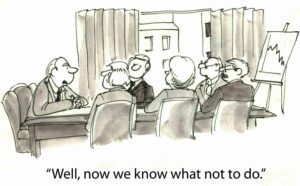STOP Audio Feedback Before It Starts!!
We’ve all been there. Someone is in the middle of a fantastic presentation, and as we’re laser-focused on every word, “SCREECH”. That shrill sound that we all know and are not very fond of starts emanating from the speakers. Yes, audio FEEDBACK!!!
Feedback is created when /a sound loop occurs between the audio input and the audio output. Technically named the Larsen effect, after Danish scientist Soren Larsen for his groundbreaking work in the physics of sound.
How Feedback Happens
Acoustic feedback is typically the result of a microphone, which serves as an audio input (commonly referred to as a “source”), hearing its sound coming from the speakers, which are considered audio outputs.
The sound is then reamplified through the loudspeakers. Unless stopped, the loudspeakers’ sound will be detected again by the microphone, and it will be amplified another time which continues the infinite loop.
This is a classic example of feedback. As a result, the piercing noise will continue until you cancel the sound loop.
Preventing Feedback
There are many solutions to prevent feedback before it occurs and correct the error if it happens.
One of the most effective ways to avoid audio feedback is to mute or turn off the microphone before raising its volume (or gain). Once the system has been fully powered on, you can gradually raise the microphone’s gain.
Be sure to pay attention to the sound quality and volume as you slowly increase the controls. Proactively setting up the system and testing well in advance of the program’s start time will provide you with additional time to determine the optimum microphone volume level for your specific audio system.
Ring Out the Microphone
It also helps to isolate the specific “problem frequency” that may be causing the hearing loop to happen.
This can be done using a process called “ringing out” the system, where professional sound engineers turn down the corresponding equalizer’s frequency which is feeding back. This prevents audio feedback at an isolated pitch, and it allows for louder, pleasantly audible volume to be achieved.
Although audio engineers frequently rely on their ears to ring out audio systems, they also rely on devices such as real-time analyzers connected to the microphone to pick up the ringing frequency.
Use an Anti-Feedback Device
Another solution to fighting audio feedback is to incorporate an anti-feedback device into your audio system. These devices (commonly referred to as feedback destroyers or feedback eliminators) can automatically reduce the high-pitched squealing noise by selecting the frequency (or a range) of the feedback and applying attenuation.
Anti-feedback devices use special filters called adaptive filters to isolate and lower the classic sound of feedback.
Place Speakers in Front of the Microphone Facing the Other Way
Since the most common culprit that causes audio feedback is a microphone being placed too close and in the direction of the output speakers, the simple solution to prevent such audio feedback problems is to strategically place the main speakers in front of the microphone and facing the opposite direction while using several small speakers (or monitors) pointing back to the subject that needs to hear on stage.

